
The Australian Bureau of Statistics (ABS) released the March Housing Finance data this morning, which was largely a non-event.
According to the ABS, in seasonally adjusted terms, the number of commitments for owner occupied housing finance (46,275) rose by 0.3% in the month of March, with the total value of dwelling finance commitments excluding alterations falling by -0.5%.
The total number of finance commitments for owner occupied housing would have in fact have fallen in March had February’s figures not been revised down (from 46,322 to 46,117) by the ABS. Not that that has stopped today’s MSM “bounce” party.
Below are charts summarising the situation at the national level. The first chart shows a breakdown of the number of housing finance commitments by component. You can see that much of the increase in housing finance commitments over the past year has been driven by refinancings:
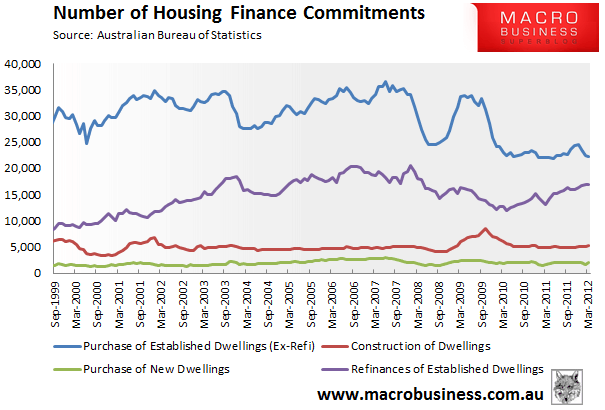
Nevertheless, until December 2011, the number of housing finance commitments (excluding refinancings) had trended upwards for 10 months. However, over the March quarter, the number of finance commitments (excluding refinancings) has fallen by -7.3% and remains -16% below the 5-year moving average:
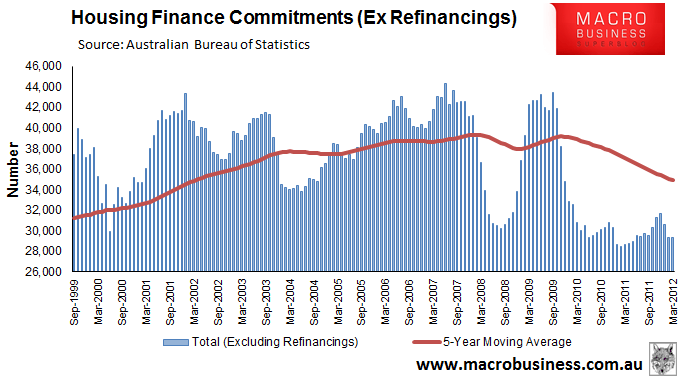
Much of the upswing in housing finance commitments to December 2011 was driven by increased activity from FHBs – a cohort that had increased their share of total owner occupied housing finance commitments from 16% in February 2011 to 21% in December 2011. However, over the past three months, the FHB share has fallen back to 16%, which has helped to drive overall finance commitments lower:
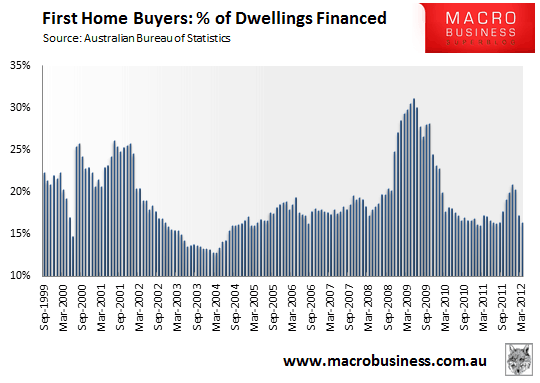
In fact, the current share of FHB commitments (16%) is around -4% below the 20-year average of 20%.
As noted previously, the fall in the share of FHBs has been driven primarily by a slump in demand from NSW FHBs (to 12% in March from 26% in December), with the other states remaining flat:
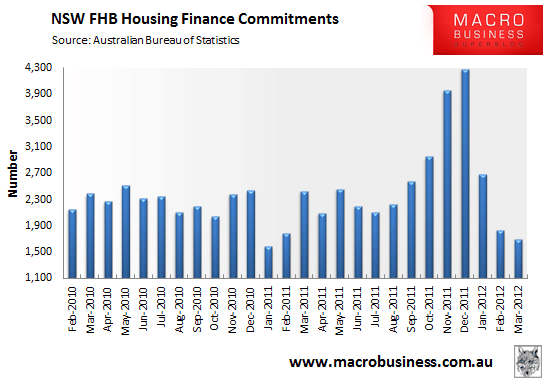
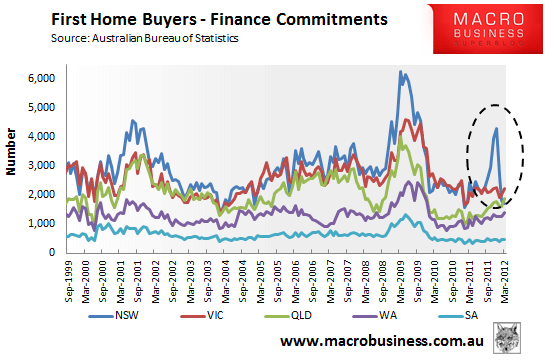
At the overall state level, NSW has experienced the heaviest falls in finance commitments (excluding refinancings) on the back of the sharp drop in FHB commitments (Note: as data is not seasonally adjusted, it is presented on a 3-month moving average basis):
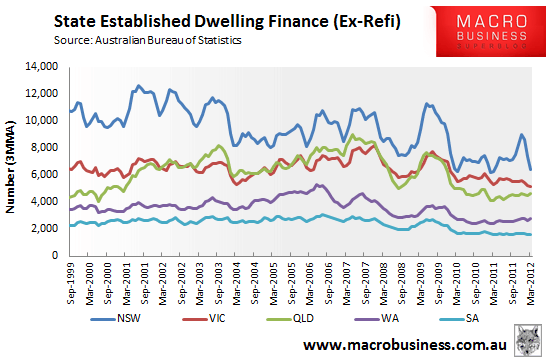
As you can see, the overwhelming majority of last year’s upwards movement in finance commitments and the latest falls have been driven by NSW.
Unfortunately, the ABS only provides the value of investor finance commitments. This series fell by -1% in March.
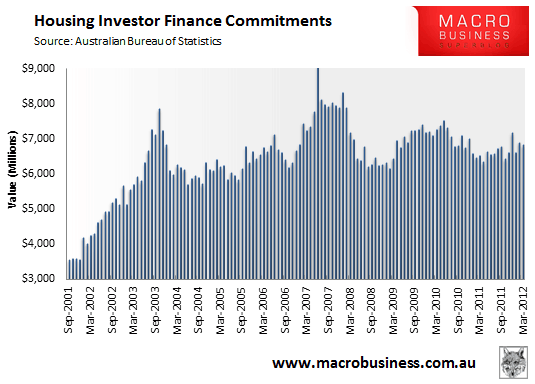
Overall, this month’s housing finance release is largely a non-event, with the modest 0.2% rise in finance commitments (excluding refinancings) driven by downward revisions to February’s data.
The bottom-line is that Australian mortgage demand remains very weak, hovering near decade lows. And until there is a pick-up in finance commitments (excluding refinancings), the Australian housing market is likely to continue its ‘slow melt’.

